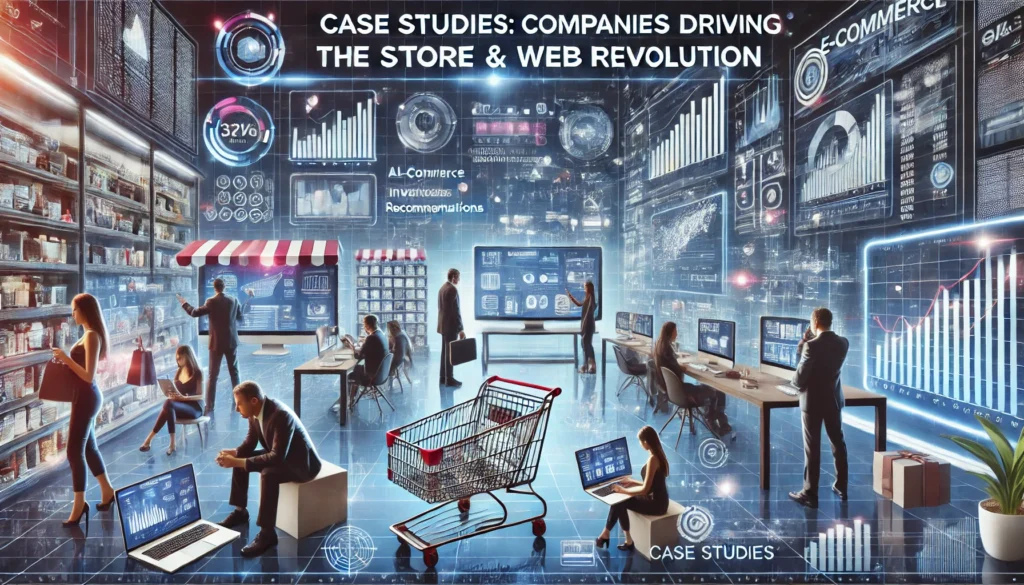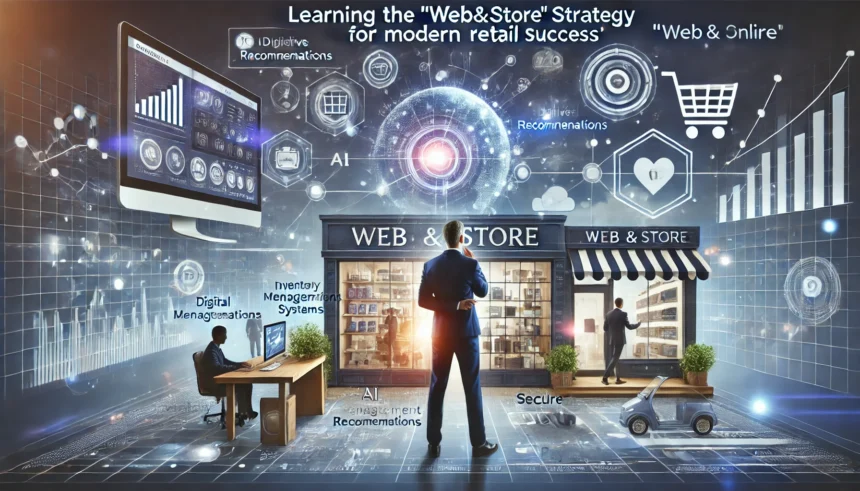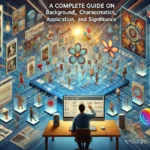Introductions To Web&Store
The difference between online and offline buying is fast vanishing in the retail environment of today. Consumers want a seamless, linked experience that combines the convenience of e-commerce with the tangibility of brick-and-mortar stores; they no longer regard ” web&store ” as separate things. This change has resulted in the online and shop strategy, a complete method combining digital and physical channels to propel involvement, loyalty, and income.
This deep dive will look at why retailers no longer find the web and store model optional, how to overcome integration issues, and practical ideas to produce a smooth omnichannel experience.
Why Integration of “Web&Store” Will Shape Retail
1. The Contemporary Shopper Expecting Adaptability
The customers of today are channel-agnostics. They might: buy in-store but do internet research on products.
• Look in-store then order via a mobile app.
• Bring returned internet purchases back to a real store.
According to a 2024 Salesforce research, 78% of consumers use several channels during their purchase path. Companies that separate their web and store operations run the danger of losing consumers to rivals providing better, linked experiences.
2. Data Synergy Motives Individualization
Combining online and retail data reveals interesting new angles:
Track consumer behavior at several points of contact (such as online cart abandonment plus in-store visits).
• Provide hyper-targeted promotions—that example, discounts for an in-store item they looked at online.
• Forecasts inventories using aggregated sales trends.
Sephora’s Beauty Insider program, for instance, recommends items both online and in-store depending on past purchases and browsing behavior using consistent data.
3. Cost Saving and Operational Effectiveness
Including web and shop operations simplifies:
• Inventory Management: Cut transportation costs by basing online orders on retailers as fulfillment centers.
• Staff Utilization: Teach staff members digital customer service as well as in-store sales.
Run campaigns aiming at both platforms (e.g., “Online-exclusive previews” with in-store pickup incentives) using your marketing budget.
Problems with Web and Store Integration (and Their Solutions)
First challenge: Disconnected technology systems
Data gaps result from many stores using distinct solutions for POS systems and e-commerce.
Use unified commerce systems including Salesforce Commerce Cloud, Adobe Commerce, or Shopify Plus.
These tools sync:
• Real-time inventory changes.
• Customer profiles (in-store transactions plus internet).
• Discounts and pricing policies.
The second challenge is inconsistent brand experiences.
A disconnected experience—that is, different return regulations for online versus retail purchases—erodes confidence.
• Audit every point of contact with customers—websites, apps, in-store signage, staff scripts).
Standardize policies (such as “buy anywhere, return anywhere“).
• Teach employees consistent messages (e.g., “Your online rewards work here too!“).
The third challenge is juggling ROI with expenses.
The initial outlay for integration tools could be challenging for small companies.
Method: Solution
Start modestly with reasonably cheap strategies:
• Incorporate QR codes inside the store linking to reviews or product videos.
• Share local store events with internet fans using Instagram geotags.
• Provide free Wi-Fi within the business to inspire app use during shopping.
Strategies for Success Online and in Stores
The core of web and store connection is Click-and-Collect: The Gateway to Omnichannel Buy Online, Pick Up In-Store (BOPIS). Advantages include:
• Faster fulfillment—no shipment delays.
• More foot traffic; thirty percent of BOPIS customers make extra in-store purchases.
• Reduced cart abandonment; Best Buy observed a 25% drop following BOPIS implementation.
Pro Tip: Give app users “skip the line” priority pickup incentives.
Convert stores into centers of experience.
Make use of physical places to improve online interactions:
IKEA’s in-store augmented reality (AR) kiosks allow consumers to see furniture in their homes.
The “GlamLab” mirrors from Ulta Beauty let customers virtually sample makeup and post images on social media.
• Workshops and Events: Lululemon runs free yoga courses in-store, pushed via email and smartphone alerts.
Use unified loyalty programs.
Reward consumers for participating across several media.
• Starbucks Rewards: Get stars for app-exclusive challenges, mobile orders, and in-store purchases.
• Nike Membership: Attending in-store workouts unlocks early access to online drops.
Empower staff members with digital tools
Give employees tablets or apps that offer:
• Inventory checks in real time.
• Customer purchase behavior—for example, “this client bought running shoes online—suggest socks!”
• Options for mobile checkout to cut waiting times.
Apple Store personnel mix digital efficiency with human interaction by using portable devices to handle payments, check stock, and set Genius Bar appointments.
Run Instagram advertisements promoting in-store events to individuals within a 10-mile radius, geo-targeted marketing using social media drive cross-channel traffic.
• User-generated content (UGC): Ask customers to post branded hashtag in-store pictures and subsequently highlight them on your website.
• Live Shopping: Organise TikHub Live events highlighting items accessible online and in-store.
Case Studies: Companies Driving the Store & Web Revolution

1. Goal: Value of Same-Day Activities
Target’s Drive-Up and Order Pick-up systems skillfully combine online and retail environments:
• Consumers order using the app.
• Workers complete orders from local shop inventories.
• Consumers spend under two hours retrieving goods curbside.
Target’s same-day operations, with 95% customer satisfaction, drove $10B+ in revenues in 2023.
2. Warby Parker: Online Try-On Meet In-Person Convenience
The online and store approach of the eyewear brand consists in at-home try-ons.
• In-store adjustments and eye exams.
• One inventory system so consumers may trade frames purchased online at any location.
Trends to Watch: The Future of Web & Store
1. Personalizing Driven by AI
By analyzing integrated web and shop data, artificial intelligence technologies will be able to forecast local store demand depending on regional online searches.
• Send tailored offers (such “The dress you viewed online is in stock at your nearest store!”).
2. Integration Drives Sustainable Development
Encourage in-store returns of internet orders to cut packing waste.
• Localized Fulfilment: Cutting carbon emissions, use store inventories for local delivery.
3. Voice shopping and smart stores
• Voice-activated shopping: “Alexa, order more toothpaste and let my closest store know for pickup.”
• Smart Shelves: Automatic online reorders are sent off when products run low by sensors.
Ultimately, welcome the Web & Store Mindet.
Retail’s future is in companies that blur the lines separating digital and physical media. Using an online and store approach helps companies to satisfy growing customer expectations for adaptability.
• Use statistics to guide individualized experiences.
• Maximize processes for sustainability and effectiveness.
The secret is to see web and stores as complimentary forces rather than rivals. The objective is clear whether via consolidated loyalty programs, AR-powered displays, or click-and-collect services: Provide a frictionless path to keep consumers interested wherever or how they buy.




